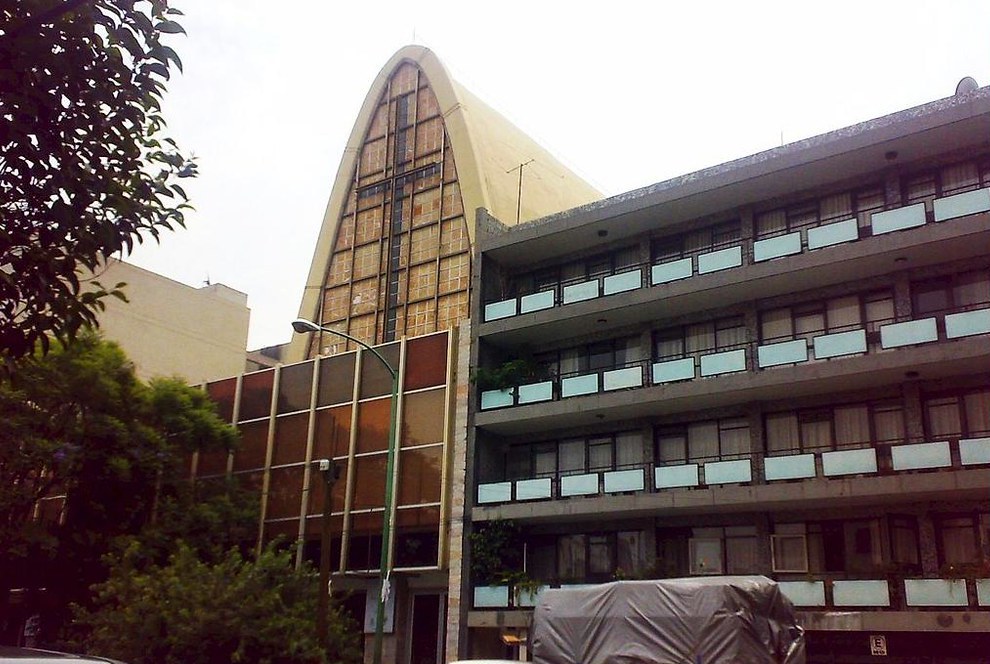
La iglesia de San Antonio de Padua es una de las pocas iglesias erigidas en el siglo XX que tiene el reconocimiento del Instituto Nacional de Bellas Artes y Literatura (INBAL) como monumento artístico moderno dotado del gran oficio y destreza que manifiesta en arquitectura.
Esta iglesia se construyó en respuesta a una solicitud realizada en 1948 por la orden católica franciscana. El terreno se había conseguido en 1941, momento en el que los desarrolladores urbanos empezaron a construir edificios residenciales en lo que antes se conocía como rancho Nápoles y que hoy en día es la colonia del mismo nombre. En el sitio en el que se encuentra actualmente esta iglesia existía una fábrica de ladrillos que generó un predio a desnivel sobre el que se levantó una capilla de madera que estuvo en uso durante algunos años antes de que se edificara la iglesia.
El diseño fue obra del arquitecto Raúl Fernández Rangel, a quien se le recuerda por varios trabajos realizados con Félix Candela; también se le asocia con muchos arquitectos que construyeron residencias en el Pedregal de San Ángel. En el caso de este templo, Fernández trabajó muy de cerca con el ingeniero Carlos Medina. El trabajo fue arduo y avanzó lentamente. Para 1956 solamente estaba terminada la cripta, un área subterránea que todavía está en uso. La construcción de la nave principal se inició en 1960 y se finalizó en 1972.
La iglesia se ve poco desde la calle. Tiene una base ortogonal y técnicamente se divide en tres naves. Las dos laterales son tan estrechas que prácticamente se usan exclusivamente para acceder a los bancos de la iglesia, pero la nave principal tiene una forma parabólica que culmina en una cúpula; sus costados están adornados con un entramado romboidal que aviva el interior y puede contribuir a que las fotos que ahí se tomen sean amenas. Con este sorprendente carácter, la nave principal de San Antonio de Padua ha dejado sentir su influencia en la arquitectura dedicada a la liturgia católica desde que fue construida.
Las sagradas esculturas de Cristo que se pueden admirar en el interior son obra de Fidias Elizondo, un reconocido escultor de Monterrey que realizó muchos trabajos a mediados del siglo pasado.
All photos this page: Catedrales e Iglesias/Cathedrals and Churches, Attribution 2.0 Generic (CC BY 2.0)
Ivan San Martín Córdova, 2016, Estructura, abstracción y sacralidad, Universidad Nacional Autónoma de México
 oficina@parroquiasanantoniodepadua.org
oficina@parroquiasanantoniodepadua.org
 +52 (55) 5543 4275
+52 (55) 5543 4275
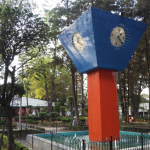
Cercano a 0.29 kms.
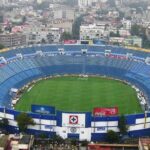
Cercano a 0.41 kms.

Cercano a 0.41 kms.
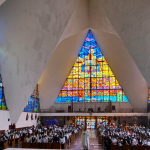
The most spectacular modernist church in the Jardín Balbuena
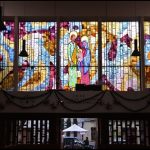
La construcción se inauguró en enero de 1967 y se ha convertido en un centro de oración para los vecinos de la zona.
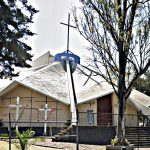
A circular modernist church on the heights over Álvaro Obregón . . .
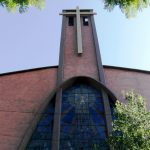
A modernist church in a giant 20th century neighborhood . . .

A modernist triumph and neighborhood church in Espartaco, Coyoacán . . .